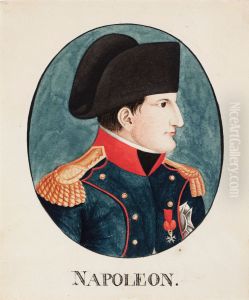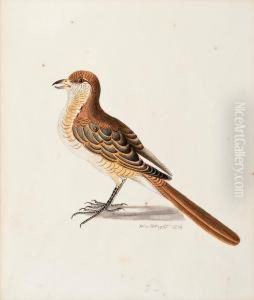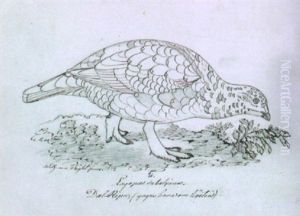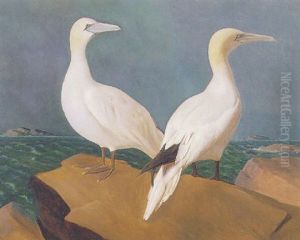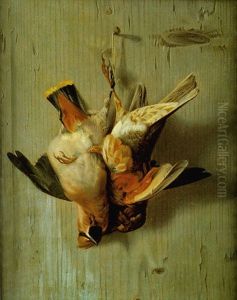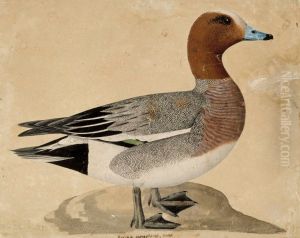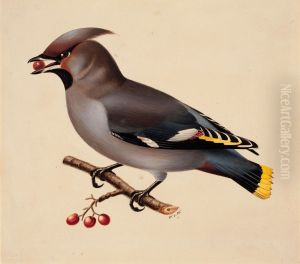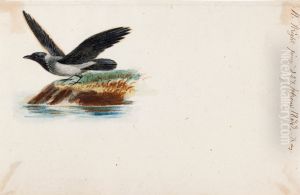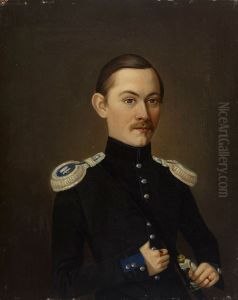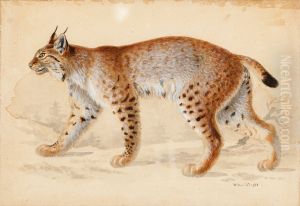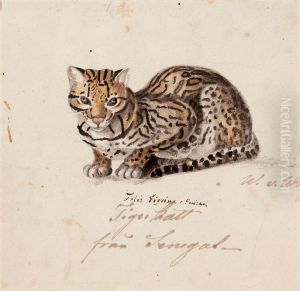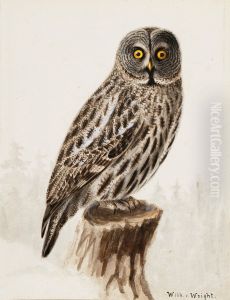Wilhelm Von Wright Paintings
Wilhelm von Wright was a Finnish-Swedish artist, born on June 13, 1810, in Haminalahti, Finland. He was one of the three Wright brothers, all of whom gained recognition for their detailed and accurate illustrations of natural history. Wilhelm, along with his brothers Magnus and Ferdinand, played a significant role in documenting the flora and fauna of Finland and Sweden during the 19th century. Their work is especially valued for the precision and beauty of their botanical and zoological illustrations.
Wilhelm's life was deeply intertwined with the natural sciences and art from an early age, influenced by the picturesque landscapes of Finland and the scientific interests of his family. His father, Henrik Magnus von Wright, was a major in the Swedish Army and an amateur artist, who initially taught Wilhelm and his brothers the fundamentals of drawing and painting. Wilhelm's decision to pursue art was also motivated by his fascination with the natural world, a passion that would define his career.
Throughout his life, Wilhelm collaborated closely with his brothers. Together, they undertook numerous commissions for scientific works, including illustrations for the 'Svenska Fåglar' (Swedish Birds), a monumental work that featured detailed illustrations of Sweden's birdlife. Despite the collaborative nature of their work, each brother brought his unique skills to their projects. Wilhelm, in particular, was known for his meticulous attention to detail and his ability to render the delicate textures of feathers and foliage with exceptional accuracy.
Wilhelm's contribution to scientific illustration extended beyond his work with his brothers. He also engaged in solo projects and was commissioned by various scientific institutions and individuals. His illustrations became essential resources for the study of Nordic natural history and were celebrated for their contribution to the field.
Despite the prominence of his work in scientific circles, Wilhelm von Wright remained relatively unknown outside the realm of natural history illustration during his lifetime. It was only posthumously that his artistry gained wider recognition, celebrated not only for its scientific accuracy but also for its artistic merit. Today, Wilhelm von Wright is remembered as one of the foremost Finnish-Swedish illustrators of the 19th century, whose work continues to be admired for its beauty and precision.
Wilhelm von Wright passed away on July 2, 1887, in Finland. His legacy, along with that of his brothers, has had a lasting impact on the fields of botanical and zoological illustration, bridging the worlds of art and science in a way that few others have. His work remains a testament to the rich natural heritage of Finland and Sweden and serves as an invaluable resource for both scientists and artists alike.
